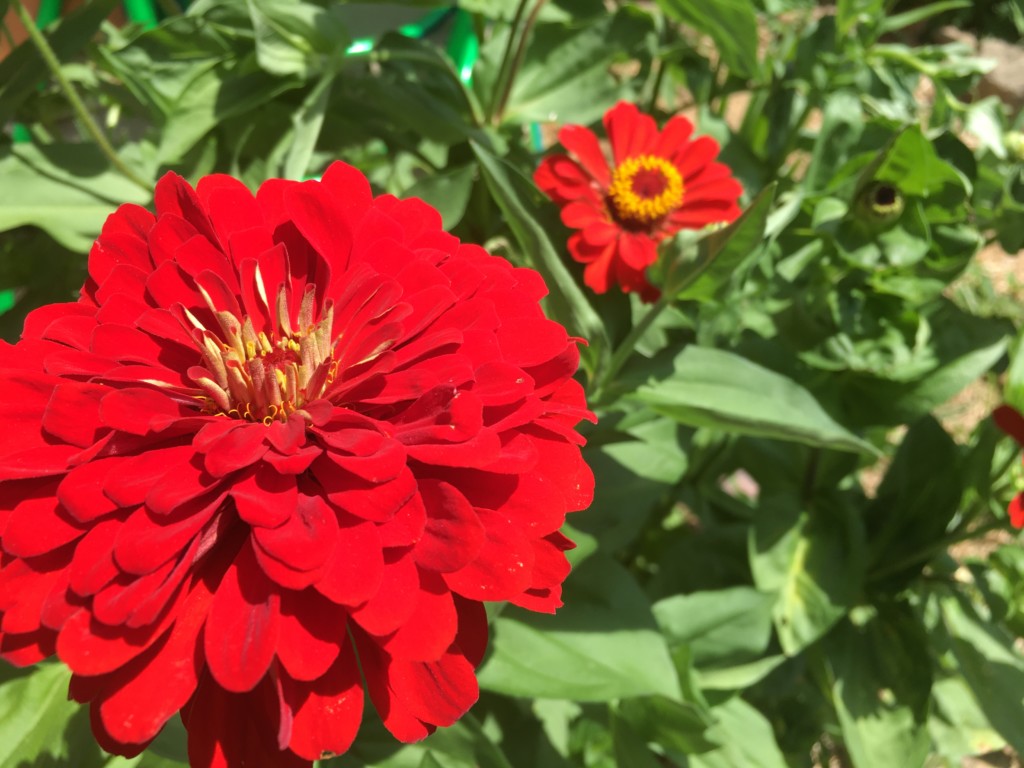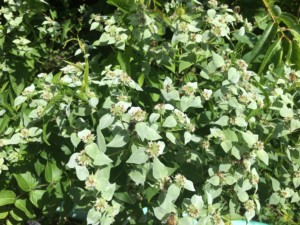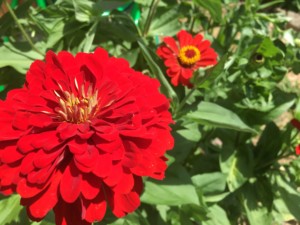
Zinnias are one flower that can be found in a pollinator garden.
I was gifted a geranium plant during my quarantine period earlier this year. With excessive time on my hand, on a whim, I decided to Google my plant to see where it came from and see what its flowers would look like. What I found was interesting. Not only are some geranium species native to Indiana, but some of them can be used to create a pollinator garden. As a biologist, I know what a pollinator and garden are, separately. But this was the first time I saw those words put together. So, this bored scientists’ curiosity was piqued and here is what I found.
What is a Pollinator Garden?
The term Pollinator garden was coined in 2015 with the announcement of The Million Pollinator Garden Challenge by The National Pollinator Garden Network. This was a nationwide campaign to educate citizens about pollinators and the role that they play in the environment around us.
What are pollinators?
Pollinators are animals that help plants with an important part of their life cycle called pollination. For plant species to survive, they need to be able to produce offspring. Pollinators like bees, butterflies etc. help with this crucial task.
What is pollination?
To understand pollination, we need to know about a few parts of a plant. Just like humans, a plant has male and female organs. Depending on the type of plant, it can contain both the male and female organs (like rose plant) or can contain one of the organs (like cucumber). The male organ produces pollen and the female organ produces eggs. When pollen fertilizes an egg, a seed is produced. (Seeds are important – because a whole plant can grow from just one seed!) Pollinators help transfer pollen to stigma (the top of the structure where eggs reside) so that a seed can be produced.
Have you ever noticed how brightly colored flowers on different plants are? These bright colors are adaptions to attract different types of pollinators to the flowers. In the case of many cultivated garden flowers, such as zinnias, the colors also come from many generation of plant breeding that select for certain color patterns. When a pollinator lands on a flower to eat its nectar, the sticky pollen sticks to the pollinator’s body and when the pollinator moves to another flower to drink more nectar, some of the pollen stuck from the first plant falls off and can reach the stigma and fertilize the egg to produce a seed.
You may ask why should we care about pollinators?
Two reasons.
Currently in the US, pollinators such as native bees, butterflies, moths and non-native honey bees are declining drastically. Honeybees and native bees are responsible for pollinating agricultural plants. Habitat loss (due to urban development, clearing land for agriculture use and introduction of invasive species), pollution through pesticide use, viruses and parasitic mites have led to declines in pollinator populations.
As a city kid myself I never had much exposure to nature and animals. Every insect and fly was dangerous. So, why should we care about something that might sting us? The plants that they pollinate produce food that are rich in nutrients – crucial for our health.
Why have a pollinator garden?
With the decline of pollinators, our food supply is in jeopardy. Increasing the number of pollinator gardens will in turn provide more nectar for pollinators’ survival and health.
The Million Pollinator Garden Challenge has been crucial in spreading awareness among citizens and responsible for “20,000 schoolyard gardens that are actively being enhanced and creating more pollinator habitat”.
Some other benefits:
- Increase in migratory wildlife
- Increase in habitat complexity
- Increase in indicator species, species that are affected by habitat change (like Monarch butterfly)
- Improvement in soil erosion
- Reduction in air and carbon pollution
- Improvement in water retention in underground water systems
Being conscious with the space around us and building a pollinator friendly environment will help our damaged ecosystem immensely!
WonderLab is creating its own pollinator garden through generous donation by the Monroe County Master Gardeners Association. Come visit the garden when we open again!
For Further Reading
- http://millionpollinatorgardens.org/about/
- https://web.extension.illinois.edu/gpe/case4/c4facts1a.html
- https://www.fs.fed.us/wildflowers/pollinators/What_is_Pollination/index.shtml
- https://www.scientificamerican.com/article/the-pollinator-crisis/
- https://www.ecolandscaping.org/11/landscaping-for-wildlife/wildlife-habitats/more-than-just-a-pollinator-garden/
- https://pages.vassar.edu/environmentalcooperative/2017/01/27/why-build-a-pollinator-garden/
- http://millionpollinatorgardens.org/
- http://millionpollinatorgardens.org/wp-content/uploads/2016/06/MPGN-Customizable-OneSheet.pdf
- http://millionpollinatorgardens.org/impact/
- https://www.nwf.org/sitecore/content/Home/Garden-for-Wildlife/About/Impact
- https://e360.yale.edu/features/declining_bee_populations_pose_a_threat_to_global_agriculture
Riddhi is a graduate student at Indiana University, Bloomington studying cancer biology. She is a passionate lover of orchestras, a keen sci-fi book reader and a traveller at heart. On her last visit to France, she visited the Palace of Versailles and its surrounding gorgeous gardens. Her love of gardens comes from a peaceful afternoon spent in Palace of Versailles’s garden captivated by their arrangement of trees, plants and beautiful flowers all around the palace.




Leave A Comment